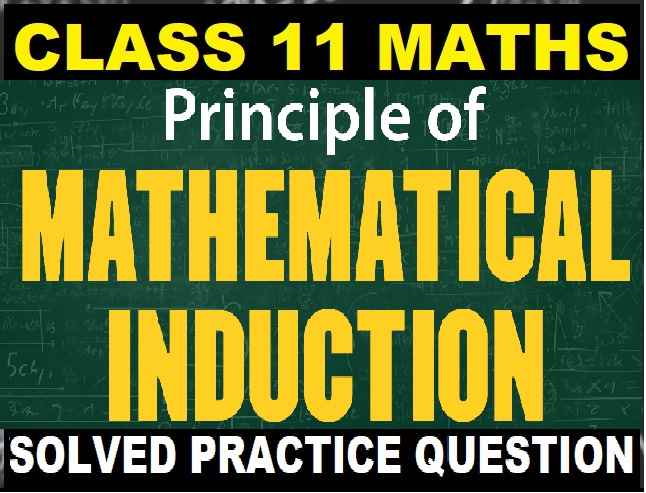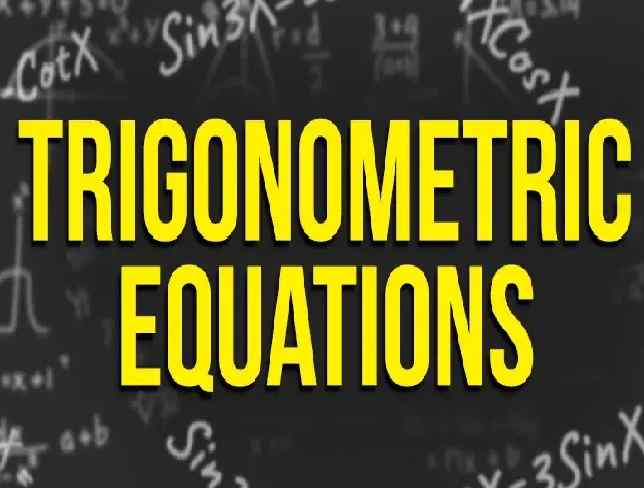Elements, Compound & Mixtures Class-7 Dalal Simplified ICSE Chemistry Solutions Chapter-3 Dr Viraf J Dalal Middle School Allied Publishers Solutions. Chapter-3. We Provide Step by Step Solutions of Exercise/Lesson -3 Question and Answers of Dr Viraf J Dalal Middle School Chemistry Allied Publishers. Visit official Website CISCE for detail information about ICSE Board Class-7.
Elements, Compound & Mixtures Class-7 Dalal Simplified ICSE Chemistry Solutions Chapter-3
| Board | ICSE |
| Class | 7th |
| Subject | Chemistry |
| Book Name | Dalal New Simplified |
| Chapter-3 | Elements, Compound & Mixtures |
| Unit-1 | Elements, Compound & Mixtures |
| Topic | Solution of exercise questions |
| Session | 2023-24 |
Exercise – 1
Elements, Compound & Mixtures Class-7 Dalal Simplified ICSE Chemistry Solutions Chapter-3
Question 1. Differentiate between the terms elements, compounds and mixtures with suitable examples.
Answer 1: Element – It is the basic unit of matter, which cannot be broken down into substances by any way but can be combined to form new substances. It is a pure substance. It classifies into metals, non-metals, metalloids and noble gases.
Example -Chlorine, Nickle, Gold
Compounds – It is a combination of two or more elements. It is a pure substance. Through chemical reactions, they can be broken down into metals.
Example – Sugar, petroleum
Mixtures – It is a combination of two or more elements or compounds or both.The substances combined in a mixture are in a particular ratio.
Example – Milk, Alloy
Question 2. State which element exists in the highest percentage in –
(a) earth’s crust
(b) atmosphere
(c) human body.
Answer 2:
(a) Oxygen (O) — 46.1%
(b) Nitrogen (N) — 78%
(c) Oxygen (O) — 65%
Question 3.Elements are mainly classified into metals and non-metals. State six properties of metals which differ from non-metals.
Answer 3: Properties of Metals:
- They are lustrous, i.e. they shine.
- They are ductile, i.e. they can be drawn into wires.
- They are good conductors of heat and electricity.
- They have high density.
- They have high melting and boiling points.
- They are malleable, i.e. they can be drawn into sheets.
Properties of Non-Metals:
- They are non-lustrous, hence they do not shine.
- They are non-ductile, cannot be drawn into wires.
- They are bad conductors of heat and electricity.
- They have low density.
- They have low melting and boiling points.
- They are non-malleable, therefore they cannot be beaten into sheets.
Question 4. Give the symbols of the following elements – and state in each case whether they are metals, non-metals, metalloids or noble gases.
(a) Potassium
(b) Carbon
(c) Oxygen
(d) Mercury
(e) Fluorine
(f) Neon
(g) Sulphur
(h) Zinc
(i) Boron
(j) Copper
(k) Calcium
(l) Xenon
(m) Arsenic
(n) Mercury
(o) Chlorine
(p) Silicon
(q) Neon
(r) Lead
(s) Antimony
(t)Sodium
(u) Iodine
(v) Platinum
(w) Radon
(x) Phosphorus
(y) Bromine
(z) Aluminum
Answer 4:
| Name | Symbols | Metals /Non-metals /Noble gases /Metalloids |
|---|---|---|
| (a) Potassium | K | Metal |
| (b) Carbon | C | Non-metal |
| (c) Oxygen | O | Non-metal |
| (d) Mercury | Hg | Metal |
| (e) Fluorine | F | Non-metal |
| (f) Neon | Ne | Noble Gas |
| (g) Sulphur | S | Non-metal |
| (h) Zinc | Zn | Metal |
| (i) Boron | b | Metalloid |
| (j) Copper | Cu | Metal |
| (k) Calcium | Ca | Metal |
| (l) Xenon | Xe | Noble Gas |
| (m) Arsenic | As | Metalloid |
| (n) Mercury | Hg | Metal |
| (o) Chlorine | Cl | Non-metal |
| (p) Silicon | Si | Metalloid |
| (q) Neon | Ne | Noble Gas |
| (r) Lead | Pb | Metal |
| (s) Antimony | Sb | Metalloid |
| (t) Sodium | Na | Metal |
| (u) Iodine | I | Non-metal |
| (v) Platinum | Pt | Metal |
| (w) Radon | Rn | Noble Gas |
| (x) Phosphorus | P | Non-metal |
| (y) Bromine | Br | Non-metal |
| (z) Aluminum | Al | Metal |
Question 5. State what is meant by the term ‘activity series of metals’. State the most reactive and the least reactive metal from the following – Zn, Ag, Na, Fe, Cu, Pb.
Answer 5: Activity series of metals:- Activity series is a series of arrangement of metals in decreasing order of their reactivity. The most reactive metal is Na. while The least reactive metals from above option is Ag,
Question 6. Give three reasons why – carbon dioxide is considered a compound, while carbon – an element.
Answer 6: Carbon (C) is an element and Carbon dioxide C02 constitutes of carbon and oxygen which are both independent elements combined together in a fixed ratio to form carbon dioxide C02. Carbon (C) is combustible and oxygen (O) supports combustion, but carbon dioxide C02 extinguishes fire.
Question 7. State what information is provided by the formula of calcium hydroxide – Ca(OH)2
Answer 7: Compound :- Calcium hydroxide
Formula :- Ca(OH)2
Information provide by formula :-
- atom of calcium,
- atoms of oxygen and hydrogen
Question 8: Four atoms of hydrogen combine with one atom of carbon to give methane [CH4]. State the valency of carbon.
Answer 8: Methane is formed by the combination of four hydrogen atoms and one carbon atom where valency of hydrogen is 1 and valency of carbon is 4.
Question 9. Write the symbols of the following elements and radicals along with their valencies.
(a) Sodium
(b) Magnesium
(c) Chlorine [Chloride]
(d) Nitrate
(e) Sulphite
(f) Aluminium
(g) Zinc
(h) Sulphur [Sulphide]
(i) Bromine [Bromide]
(j) Sulphate
(k) Hydroxide
(l) Calcium
(m) Carbonate
(n) Potassium
(o) Phosphate
(p) Iodine [Iodide]
Valency list: (i) 1+ (ii) +2, (iii) +3, (iv) -1, (v) -2-(vi) -3
Answer:
| Name | Symbols | Radicals |
|---|---|---|
| (a) Sodium | Na | Na1+ |
| (b) Magnesium | Mg | Mg2+ |
| (c) Chlorine | Cl | Cl1- |
| (d) Nitrate | NO3 | NO31- |
| (e) Sulphite | SO3 | SO32- |
| (f) Aluminium | Al | Al3+ |
| (g) Zinc | Zn | Zn2+ |
| (h) Sulphur | S | S2- |
| (i) Bromine | Br | Br1- |
| (j) Sulphate | SO4 | SO42- |
| (k) Hydroxide | OH | OH1- |
| (l) Calcium | Ca | Ca2+ |
| (m) Carbonate | CO3 | CO32- |
| (n) Potassium | K | K1+ |
| (o) Phosphate | PO4 | PO43- |
| (p) Iodine | I | I1- |
Question 10. Write the chemical formula:
Question: (a) magnesium oxide
Answer: (a) MgO
Question: (b) Sodium bromide
Answer: (b) NaBr
Question: (c) calcium sulphide
Answer: (c) CaS
Question: (d) magnesium sulphate
Answer: (d) Mg SO4
Question: (e) aluminium chloride
Answer: (e) AIC4
Question: (f) zinc oxide
Answer: (f) ZnO
Question: (g) calcium carbonate.
Answer: (g) CaCO3
Question 11. Give the formulas of the following acids:
Question: (a) hydrochloric
Answer: (a) Hydrochloric — HCI
Question: (b) nitric
Answer: (b) Nitric —HNO3
Question: (c) sulphuric
Answer: (c) Sulphuric —H2SO4
Question: (d) carbonic — acid.
Answer: (d) Carbonic acid —H2CO3
Question 12. Give the formulas of the following gases:
(a) hydrogen chloride
Answer: (a) hydrogen chloride — HCI
(b) ammonia
Answer: (b) ammonia — NH3
(c) carbon monoxide
Answer: (c) carbon monoxide— CO
(d) nitric oxide
Answer: (d) nitric oxide— NO
(e) nitrous oxide
Answer: (e) nitrous oxide — N2O
(f) nitrogen dioxide
Answer: (f) nitrogen dioxide — NO2
(g) nitrogen
Answer: (g) nitrogen – N2
(h) sulphur dioxide
Answer: (h) sulphur dioxide— SO2
Question 13. Explain the term mixture. Differentiate between a homogenous and a heterogeneous mixture with one example of each in the
(a) solid-solid
(b) solid-liquid
(c) liquid-liquid state of the mixture.
Answer 13: Substances made up of two or more elements / compounds or both, mixed together in any proportion are called mixtures.
Examples – Air, Smoke, milk and sugar
| Homogeneous Mixture | Heterogeneous mixture |
|---|---|
| The constituents are uniformly mixed in a homogeneous mixture. | The constituents are not mixed uniformly in a heterogeneous mixture. |
| The properties and composition are uniform throughout the mixture. | The properties and composition vary throughout the mixture. |
| Example – (i) Solid-solid – Alloys (ii) Solid-liquid – Sugar solution, (iii) Liquid-liquid – Alcohol & Water | Examples – (i) Solid-solid – Iron & Sulphur (ii) Solid-liquid – Sand & Water (iii) Liquid-liquid – Oil & Water |
Question 14. State four differences between – elements, compounds and mixtures with suitable examples.
Answer 14: State four differences between – elements, compounds and mixtures with suitable examples:-
Elements:- 1. Pure substance made up of one kind of atoms only. e.g. Iron [Fe], Sulphur [S]
2. Elements i.e. atoms of one kind are present on their own. e.g. Iron and sulphur exist on their own as elements iron and sulphur.
3. Elements have a definite set of properties. Elements classified into metal and non-metals each with its own properties.
4. Elements occur on their own or as compounds and can be separated by chemical and physical methods.
Example: Metals – Iron, copper, silver, gold.
Compounds:- 1. Pure substance made up of two or more elements, e.g. Iron sulphide [FeS]
2. Components in a compound present in a definite proportion. e.g. Iron and sulphur are chemically combined in a fixed ratio in iron sulphide.
3. Compounds have a definite set of properties.
4. Elements in a compound are chemically combined and can be separated by chemical methods only.
Example: Iron sulphide, copper oxide, water, Sodium chloride, copper, sulphate.
Mixtures:- 1. Impure substance made up of two or more elements or compounds, e.g. Iron sulphur mixture.
2. Components in a mixture present in any proportion. e.g. Iron and sulphur are mixed in any ratio in the mixture of iron and sulphur.
3. Mixture does not have a definite set of properties. Components of a mixture do retain their original properties.
4. Components in a mixture are chemically mixed and can be separated by physical methods only.
Example: Iron + sulphur, copper + silver, air, brass. Sodium chloride + water, copper sulphate + water.
Question 15: State the correct technique for separation of the following mixtures.
Question: (a) a sublimable solid and a non-sublimable solid.
Answer: (a) Sublimation
Question: (b) a liquid component from soluble impurities in the liquid component.
Answer: (b) Evaporation
Question: (c) a lighter liquid from a heavier liquid.
Answer: (c) Separating funnel
Question: (d) a low boiling point liquid from a high boiling point liquid.
Answer: (d) Fractional distillation
Question: (e) solid constituents in a liquid constituent by adsorption.
Answer: (e) Chromatography
Question 16. Give – (a) The principle involved in separation of the mixture (b) The technique of separation for each of the following mixtures.
(1) Naphthalene and sodium chloride
(2) Common salt from a solution of common salt in water
(3) Pure water from impure water
(4) Kerosene and water
(5) Methyl alcohol and water
(6)Dyes of an ink
Answer 16: (1) By Sublimation
Principle – The process of conversion of solid directly into gaseous state and back to solid without passing through the liquid state.
Sublimable solid changes into vapour on heating and the non-sublimable solid is left behind, and they are separated.
Technique – Naphthalene and sodium chloride are heated in a dish and a funnel is kept over it, after some time naphthalene evaporates and turns into vapour which is seen on the walls of the funnel. Sodium chloride is left behind, and the mixture is separated.

(2) By Evaporation
Principle – Evaporation is the process of conversion of liquid component to its gaseous state by heating.
Technique – In a salt solution, water evaporates on heating and salt crystals are left behind in the dish.

(3) By Distillation
Principle – The process of separating two liquids by heating and converting into vapour in a distillation flask and its condensation of the vapour back into the liquid.
Technique – the mixture is kept in a distillation flask and the flask is heated. The liquid or the pure water vaporises and the impurities are left behind in the flask.

(4) By Separating funnel
Principle – The method used to separate two immiscible liquids, out of which one is heavy and the other is light.
Technique – The mixture of kerosene and water is kept in a funnel. The heavier liquid that is water settles down in the funnel and removed by opening the tap at the bottom. The lighter liquid, i.e. kerosene remains in the funnel.

(5) By Fractional Distillation
Principle – The process of separating two miscible liquids with different boiling points.
Technique – The mixture of alcohol and water is kept in a distillation flask and heated slowly, the liquid which has a lower boiling point evaporates and collects in the receiver after condensation in the Leibigs condenser,
The fractionating column separates the vapours of other liquid to condense, keeping the two separated.

(6) By Chromatography
Principle – It is a method of separating the various components of a mixture by their difference in rate of flow over an absorbent medium.
Technique – Ink spots contain different solid constituents. It is kept on the filter paper. The lower end of filter paper is dipped in the solvent and hung. The solvent flows over the ink spot and the dyes separate out.

– : End of Elements, Compound & Mixtures Class-7 Dalal Simplified Solutions :–
Return to – Dalal Simplified Chemistry for ICSE Class-7 Solutions
Thanks
Share with your friends.



hello!!!
Thank you so much , it is very useful but unable to print it or download it if it is possible to download or print it will be easy to study later.
regards.
this site is only online and free of cost which is live 24 hours for read only
Ok
Done